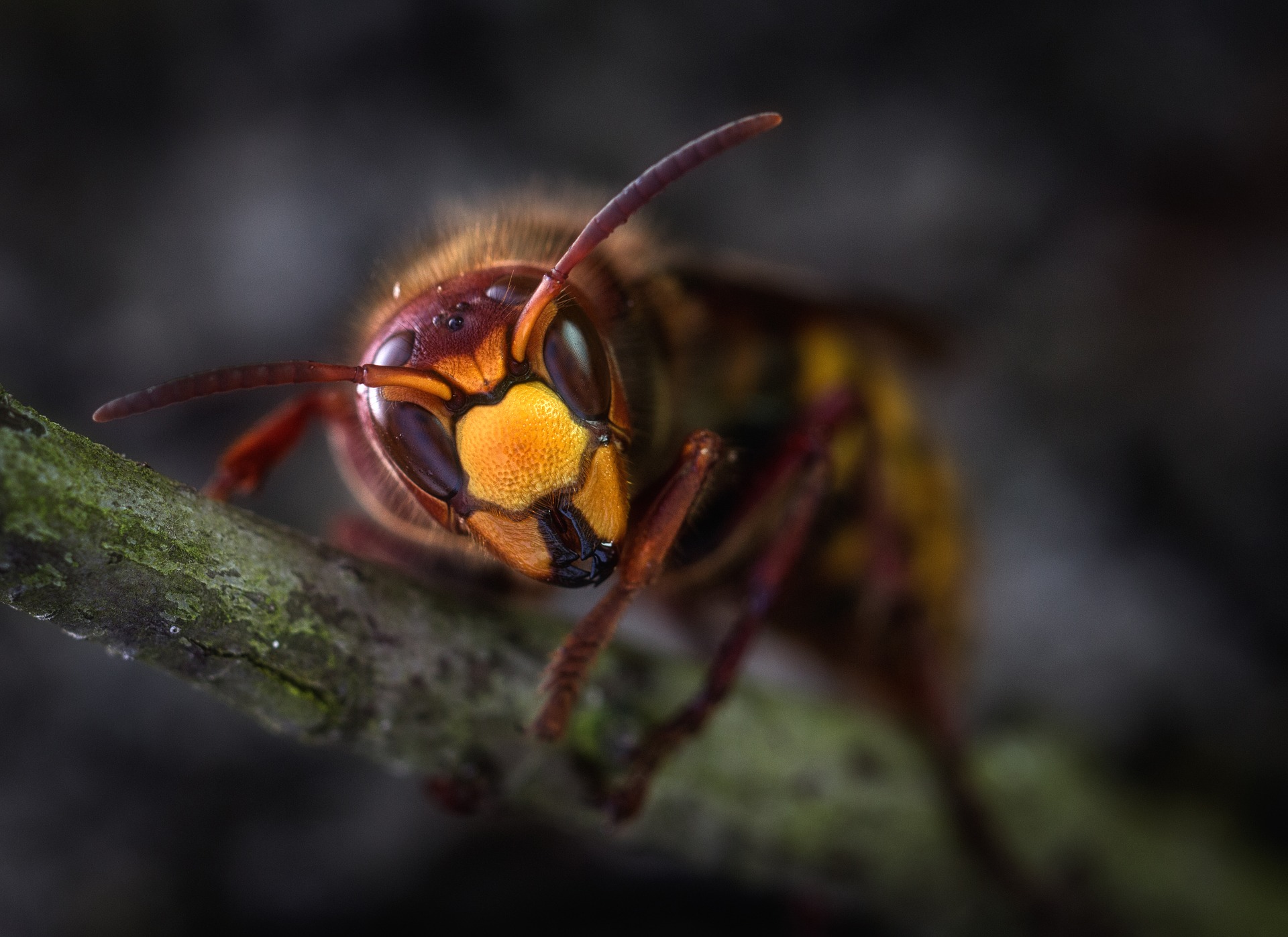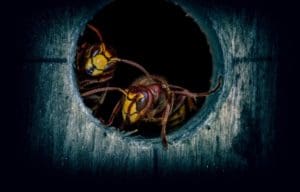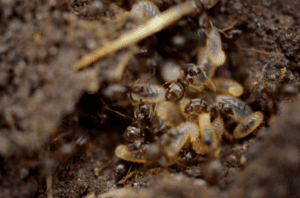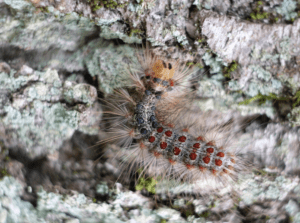

Given the name, it’s likely to assume that the Murder Hornet is cause for concern. Up until recently, those who reside in New Jersey state and rest of the US did not have to worry about the possibility of running into such a terrifying pest. But in 2020, there were discoveries of the Murder Hornet making its way to US soil.
We can assume that this may be a cause for concern but don’t fret too much. A good pest control service and knowing how to spot a Murder Hornet can save you from an unwanted encounter with the nasty bug.
Here are some facts and knowledge about Murder Hornets that can help you avoid them at all costs.
How To Identify A Murder Hornet
You might be the most familiar with the sight of the common European Hornet. The Murder Hornet, otherwise known as the Giant Asian Hornet has some very similar characteristics except it is more commonly found in India, Japan, and China. However, it has been making its way to the US.
Murder Hornets are also known as “Giant” Asian Hornets because of their larger size. The queen hornet will grow to approximately 2 inches long with a three-inch wingspan. You definitely wouldn’t want to see her flying towards you!
The worker hornets are slightly smaller, measuring at around 1 and a half inches. The scariest part of the hornet is the female of the species has a stinger around a quarter of an inch long, meaning it’s perfectly capable of penetrating through any bee-keeping equipment.
When looked at closely, the Murder Hornet’s face differs dramatically from the European Hornet. The front plate of their head - referred to as the “clypeus” - is cleft. The bug's cheeks or “ganea” are characteristically wider than most other species, and if their long stinger wasn’t enough, they also have orange pincers that they will use to take down their prey.
Murder Hornets Compared To Other Species
As previously mentioned, the European Hornet is the most common species of hornet in the US - but now that the Asian Hornet has made its way into the US, how can we identify the differences between the two?
The first difference between the two species is the size. Asian Hornets are bigger than European Hornets but not by much.
Even though they are of a similar color, the Murder Hornet and the European Hornet have different patterns present on their abdomen. The Murder Hornet has an identifiable stripe, whereas the European Hornet is more yellow with a black tear drop-like pattern present. The thorax on the European hornet is a clearly different color to that of the Murder Hornet, with the European Hornet’s being of a reddish-brown color while the Murder Hornet’s in a dark black color.
Another species that can get confused with the Murder Hornet is the Easter cicada killer. These both have similar fatal names and can grow to around the same size. Some of the Eastern cicada killers have been known to grow to be 2 inches long, similar to that of the Murder Hornet. The biggest difference is their markings, as the Cicada Killer is black with yellow marking while the Murder Hornet is the opposite.

How Did Murder Hornets Get To America?
Up until 2020, Murder Hornets were exclusively found in the previously-mentioned parts of Asia and did not pose a threat to the US whatsoever. Recently, the Murder Hornet species was discovered in Washington, DC, and British Columbia in Canada. The ones discovered in Canada led to a full nest of Murder Hornets, which was quickly destroyed. This was essential to avoid disrupting the surrounding ecosystem.
Upon further DNA testing of the two Murder Hornets discovered in North America, it was detected that the hornets discovered in British Columbia were not related to the ones discovered in Washington, meaning they entered North America on separate occasions. Taxonomists subcategorized the two cases of Hornets into subspecies, which may help detect where and when these species of Murder Hornets entered the country and how to avoid further infestations.
Scientists still aren’t sure how or why the Murder Hornet made its way to North America, but there are a few theories.
Hitchhikers: It’s likely that the Hornets came into America while accidentally hitchhiking on a ship coming from Asia. The containers that come in and out of the ports can be filled with all sorts of pests from foreign countries, and this kind of occurrence happens all the time.
Smuggled In: Another possibility is that they may have been smuggled in and accidentally freed by a human traveler. The larvae and pupae of the Murder Hornet are used for medicinal purposes in Asia, and this could be the reason why someone might want to smuggle the hornet into the American borders. Many rural villagers in parts of Asia rely on the harvesting of Murder Hornet nests to make a living, so it’s not unheard of that people may value the health benefits of the hornet’s larvae and pupae consumption, so much so, that they are willing to smuggle it into foreign countries illegally.
The hive of the Murder Hornet needs to be actively alive in order for the larvae to still possess its health benefits, and that is where the issue arises. If the nest was not detected and intercepted by officials upon entering US borders, then it’s highly likely some hornets may escape and breed in foreign territory. Hornets are resilient creatures, making it possible for them to stay alive during illegal travel, and still have the capability to escape and go on to make a hive elsewhere.
How Dangerous Are Murder Hornets?
Given the name, most people will assume that a sting from a Murder Hornet is always fatal. Fortunately, this isn’t the case. The Murder Hornet actually gets its name from its predator habits, where they brutally feed on other insects like bees. A Murder Hornet, despite looking and sounding rather scary, is unlikely to even sting a human. The only time the hornet will sting is when they feel that you pose a threat to them or their food source. That’s why it’s common for beekeepers to get stung by hornets.
In the unlikely event that you are stung by a Murder Hornet or any hornet, the pain will be the most concerning part. Unless you are allergic to the hornet's venom, you won’t die. However, it’s still a risky interaction as around 5% of the US population has a bee allergy. If you’re allergic to bees, it’s highly plausible that you also have a wasp, hornet, and yellow jacket allergy.
It’s also common for people to have an allergy that they aren’t aware of because of how unlikely it is to get stung, which can result in death due to the lack of knowledge on what to do.
Another way a Murder Hornets sting may be fatal is if you were stung multiple times. Again, this is unlikely to ever happen in your lifetime. In Japan there over an 8-year span between 2010 and 2018, there was an average of 21 deaths per year from bee, wasp, or hornet stings - and only a fraction of those deaths were directly related to Murder Hornets. In a graph from the CDC, it was shown that during the same time period in the US, this death toll was actually higher in comparison to the years when the Murder Hornet was first discovered here.
The Sting In The Tail
The pain from a Murder Hornet’s sting is notably more intense when compared to the sting of a bee, wasp, or other species of hornet. This is due to the sheer size of the Murder Hornets stinger. With such a large sting, it’s bound to be pretty painful and you’ll want to see a health care professional for some ointment or pain killer.
When you are stung by any hornet, it’s normal to feel pain for a few hours and swelling will typically last a few days. If you are concerned about the sting site it’s best to talk to a GP or a pharmacist. They will prescribe an anti-inflammatory to help with the pain. If you are allergic to the sting, you need to go to the emergency room as soon as possible. An allergic reaction to insect stings can cause anaphylaxis and you’ll need an EpiPen.

How Murder Hornets Can Harm An Ecosystem
Murder Hornets may not be a fearsome threat for humans, but they are for other species of insects. Murder Hornets are known to be at the top of the food chain in the insect kingdom, and have the ability to decimate full colonies of bees, wasps, and smaller hornets. During the months between August and October, they’ll pretty much exclusively feed on honeybees, making them a serious threat to the local honeybee population.
When Murder Hornets feast on their prey, it isn’t an easy death for the poor insect. The hornet will use its mandibles to chop off the bee's head, abdomen, and legs. Next, they will form the bee’s thorax into a ball and take it back to its colony for feasting.
Bee Warned
It only takes 2 or 3 hornets to wipe out an entire hive of bees. So the discovery of a hive of hornets in British Columbia was concerning, hence why it had to be destroyed immediately.
Hornets won’t only slaughter the bees in their hive, but they will also occupy the hive for their own colony. A single hornet can stumble across a bee hive and then secrete a pheromone onto this chosen hive. The rest of this hornet’s colony will follow this pheromone and attack the beehive, occupying and defending it for up to 10 days while feasting on the bees and their offspring.
In the Asian Hornet’s native country of Japan, honeybees have co-evolved with the hornet and have developed a defense mechanism to protect their hive from a single hornet attack which helps to protect the bee population. However, the bees in North America have not adapted and are not equipped for a hornet attack, meaning the bee population will suffer further if exposed to a new fierce predator.
Bees are an essential part of the ecosystem, with the sole responsibility of pollinating flowers and plants. We’ve already seen their numbers declining due to other factors of global warming and deforestation, so we can’t risk any further effects on the bee population.
Should We Be Worried About Murder Hornets?
It’s highly unlikely you’ll experience an infestation of Murder Hornets on your property, and you’re not even likely to see one out in the wilderness. The Murder Hornet is not native to America or New Jersey and doesn’t pose a threat yet, but if there are more undiscovered colonies then our bee population could be in trouble.
If you are struggling with any hornet infestation on your property, you’ll need to call in the professional services of Twin-Boro. Even if they don’t live up to their name in some ways, you certainly don’t want to risk a sting from these creatures or have them wreak havoc on your local ecosystem.






